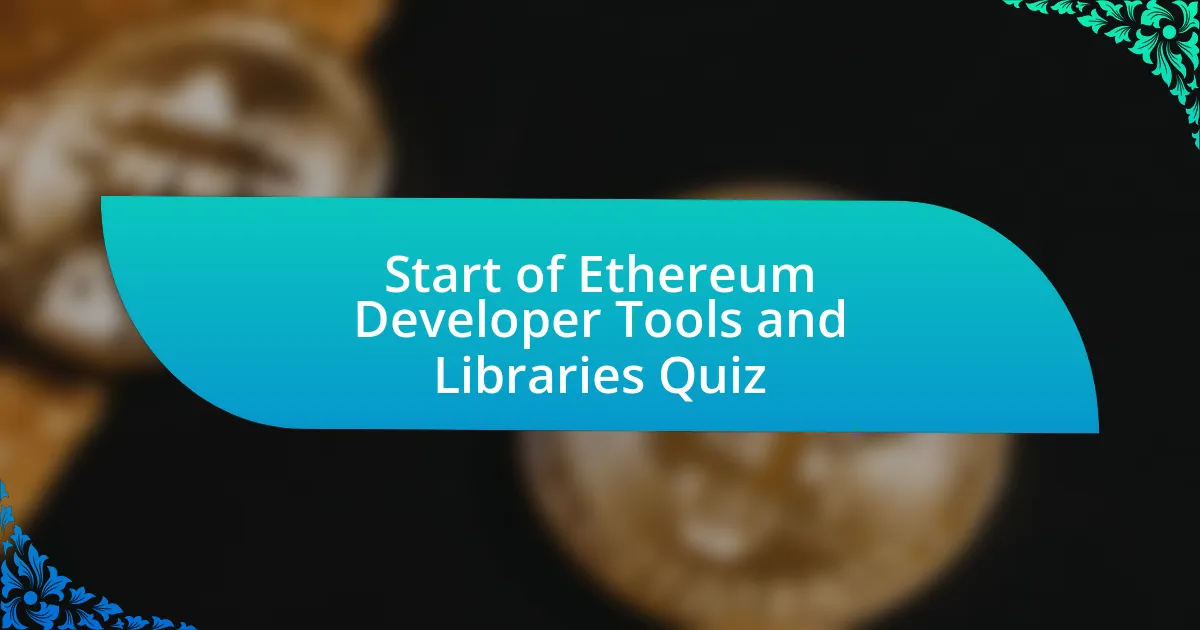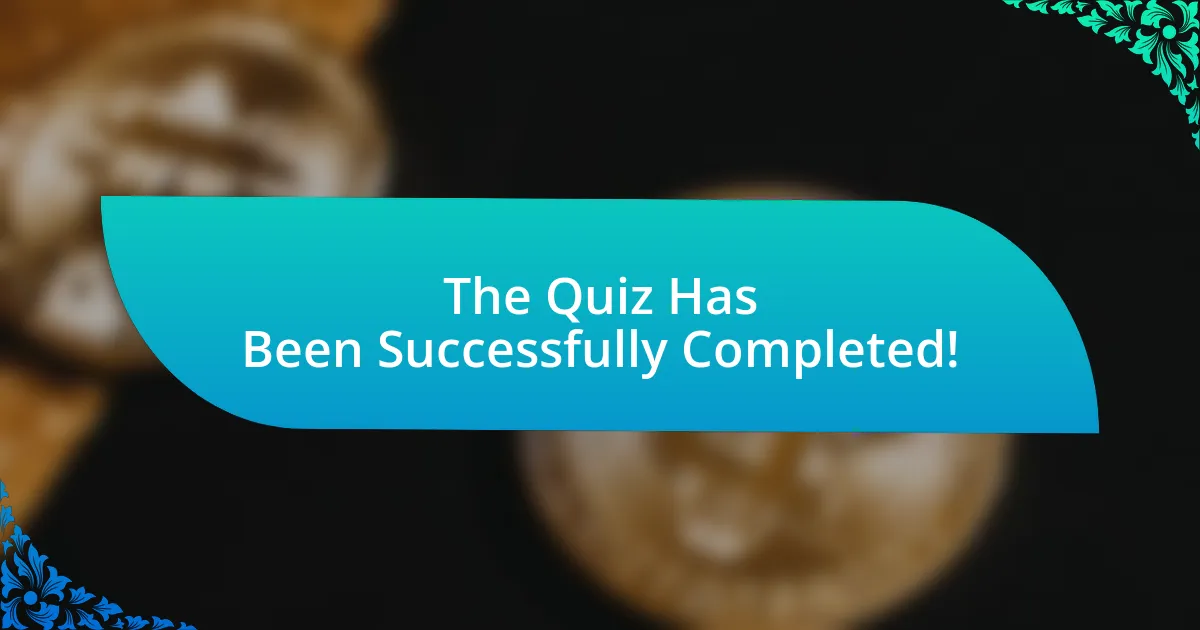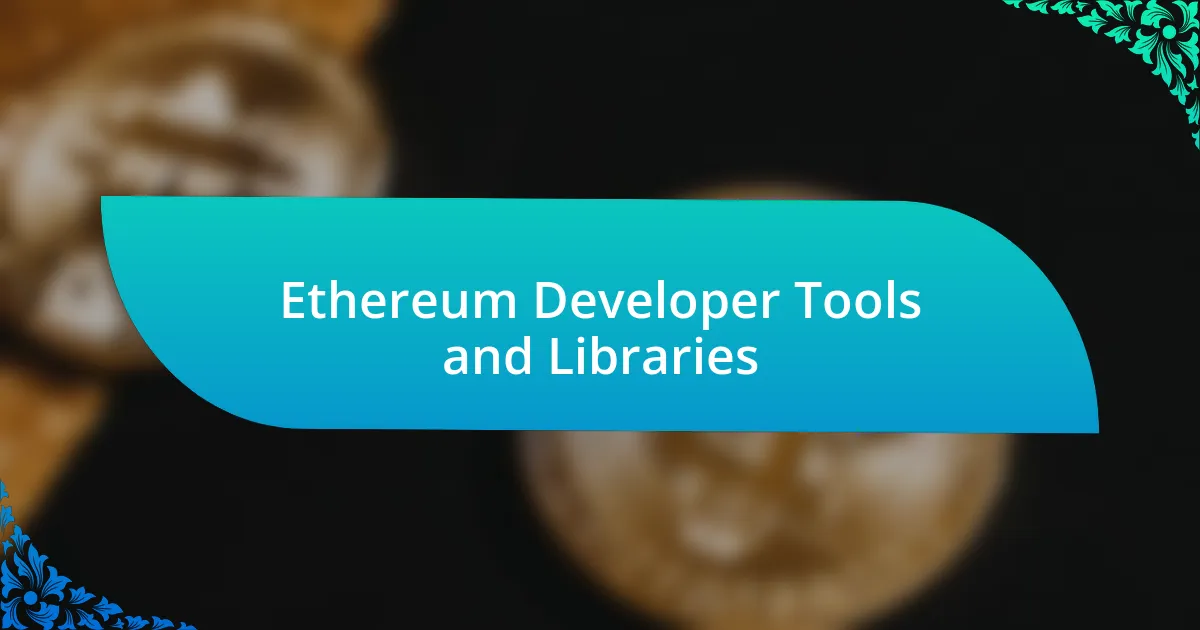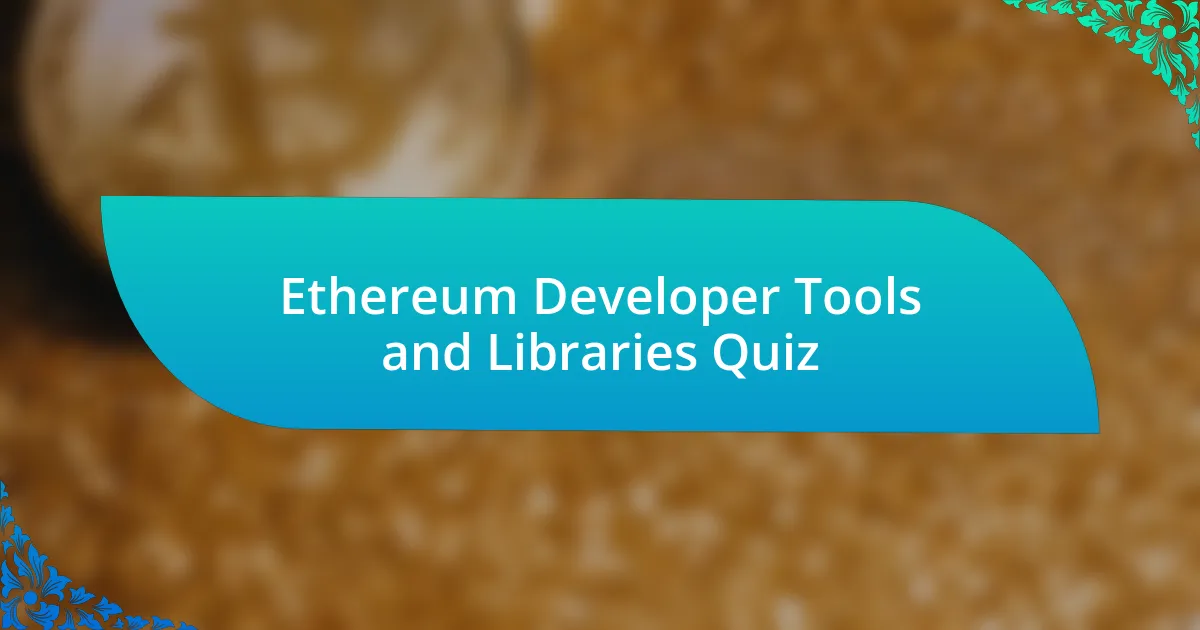
Start of Ethereum Developer Tools and Libraries Quiz
1. What is Truffle used for in Ethereum development?
- Truffle is a popular testing and development environment for Ethereum.
- Truffle is an Ethereum hardware wallet for secure storage.
- Truffle is an Ethereum mining software for creating new blocks.
- Truffle is a decentralized exchange platform for trading ETH.
2. How does MetaMask facilitate interaction with dApps?
- MetaMask only stores Bitcoin in its wallet.
- MetaMask generates new coins using a mining process.
- MetaMask allows users to connect and interact with dApps seamlessly.
- MetaMask provides a secure payment processing service for dApps.
3. What functionalities does Ethers.js provide for Ethereum developers?
- Ethers.js serves as a visual interface for Ethereum-based games and applications.
- Ethers.js is used solely for Bitcoin transactions and mining processes.
- Ethers.js focuses exclusively on creating decentralized storage solutions.
- Ethers.js provides functionalities for Ethereum transactions, smart contract interactions, and wallet management.
4. What key features are offered by the Embark framework?
- Embark is exclusively for developing centralized databases for applications.
- Embark creates only mobile applications without support for dApps.
- Embark integrates Ethereum blockchains, decentralized storage, and auto-deploy contracts.
- Embark focuses solely on traditional web app development and deployment.
5. How does Drizzle enhance front-end development for Ethereum applications?
- Drizzle automates transaction fees for Ethereum networks.
- Drizzle converts Ethereum smart contracts to JSON format.
- Drizzle provides reactive data management for Ethereum apps.
- Drizzle serves as a blockchain explorer for Ethereum.
6. What is Solidity, and what is its role in Ethereum development?
- Solidity is a database used for storing transaction history on Ethereum.
- Solidity is a type of cryptocurrency used for transactions on the Ethereum network.
- Solidity is the main programming language used to create smart contracts and dApps on the Ethereum platform.
- Solidity is a graphical user interface for interacting with Ethereum nodes.
7. In what ways does Ethereum differ from Bitcoin in blockchain technology?
- Bitcoin supports decentralized applications, but Ethereum does not.
- Ethereum focuses only on peer-to-peer transactions, unlike Bitcoin.
- Ethereum provides a programmable blockchain with smart contracts, while Bitcoin is primarily a digital currency.
- Bitcoin allows for multi-chain interactions, while Ethereum does not.
8. Can you define what dApps are in the context of Ethereum?
- dApps are decentralized applications built on blockchain technology.
- dApps are mobile applications for social media.
- dApps are web browser plugins for gaming.
- dApps are desktop applications for centralized databases.
9. Where are all Ethereum transactions documented?
- Public ledger
- Encrypted database
- Private file
- Central server
10. What are the different types of Ethereum networks available?
- Global, local, and hybrid networks
- Public, private, and hybrid networks
- Mainnet, devnet, and sidechains
- Centralized, decentralized, and private networks
11. What tools are necessary for mining Ethers?
- Ethereum Wallet
- Truffle Suite
- MetaMask
- Geth CLI
12. Can you name a practical application of smart contracts?
- Email marketing automation
- Social media management
- Real estate transactions
- Stock market analysis
13. What is the currency token associated with Ethereum?
- Ripple (XRP)
- Litecoin (LTC)
- Bitcoin (BTC)
- Ether (ETH)
14. What does the Ethereum Virtual Machine (EVM) do?
- The EVM creates new cryptocurrencies without contracts.
- The EVM manages network transactions for Bitcoin.
- The EVM executes code for smart contracts and dApps.
- The EVM stores user data for Ethereum wallets.
15. What is the average block time and size in Ethereum?
- The block time is 12 seconds, and the average block size is 4 KB.
- The block time is 20 seconds, and the average block size is 512 KB.
- The block time is 10 seconds, and the average block size is 1 MB.
- The block time is 14 seconds, and the average block size is 2 KB.
16. Are transactions on the Ethereum network confidential?
- No, transactions are not confidential on the Ethereum network.
- Yes, transactions can be hidden on the Ethereum network.
- No, all transactions are confidential on the Ethereum network.
- Yes, transactions are completely private on the Ethereum network.
17. What purpose does a user`s private key serve in Ethereum transactions?
- The user`s private key is used to generate public addresses.
- The user`s private key is used to sign transactions.
- The user`s private key is used to encrypt transaction data.
- The user`s private key is used to create smart contracts.
18. What is the function of the ABI in interacting with smart contracts?
- The ABI facilitates the creation of Ethereum wallets.
- The ABI generates random tokens for smart contracts.
- The ABI connects smart contracts to external databases.
- The ABI is used to encode and decode smart contract functions and outputs.
19. Can you list some popular libraries used in Web3 development?
- ethers.js
- react.js
- vue.js
- angular.js
20. What does Truffle Verify do for smart contracts?
- Truffle Verify is a plugin that stores smart contracts off-chain.
- Truffle Verify is a plugin that verifies Solidity code on the Ethereum blockchain.
- Truffle Verify is a plugin that enhances user interface design for dApps.
- Truffle Verify is a plugin that optimizes transaction speeds for Ethereum.
21. What is Etherspot, and what does it provide developers?
- Etherspot is a programming language used to write smart contracts.
- Etherspot is a decentralized exchange for trading Ethereum tokens.
- Etherspot is a multi-chain smart wallet SDK that supports most EVM-compatible chains.
- Etherspot is a browser extension for Ethereum wallets.
22. What does useDApp aim to achieve for Ethereum developers?
- It streamlines the development process for Ethereum developers.
- It provides security audits for Ethereum smart contracts.
- It creates automated trading bots for the Ethereum network.
- It offers a cryptocurrency wallet for Ethereum users.
23. What is the main function of light.js?
- light.js is a framework for building backend services.
- light.js is a high-level reactive JS library optimized for light clients.
- light.js is a blockchain for decentralized applications.
- light.js is a database management tool for web applications.
24. How does Web3Wrapper serve developers working with Ethereum?
- Web3Wrapper is a wallet management application.
- Web3Wrapper is a blockchain mining software.
- Web3Wrapper is a TypeScript Web3 alternative.
- Web3Wrapper is a database structuring tool.
25. What is the role of the Moralis NextJS SDK in dApp development?
- Moralis NextJS SDK provides React hooks for developing dApps.
- Moralis NextJS SDK is a tool for general blockchain mining.
- Moralis NextJS SDK is a standalone blockchain.
- Moralis NextJS SDK serves as an Ethereum wallet.
26. How do flex-contract and flex-ether simplify interaction with smart contracts?
- flex-contract and flex-ether create complex layers for smart contract access and execution.
- flex-contract and flex-ether are modern, zero-configuration, high-level libraries for interacting with smart contracts and making transactions.
- flex-contract and flex-ether use outdated protocols to enhance smart contract deployment.
- flex-contract and flex-ether require extensive setup and configuration for smart contract interaction.
27. What functionality does ez-ens provide for Ethereum users?
- ez-ens is a simple, zero-configuration Ethereum Name Service address resolver.
- ez-ens is a multi-signature wallet for Ethereum transactions.
- ez-ens is a decentralized exchange for trading Ethereum tokens.
- ez-ens is a blockchain explorer for tracking Ethereum block data.
28. What languages do Web3.py and Web3.php libraries cater to?
- Go and Rust
- Ruby and Swift
- Java and C#
- Python and PHP
29. What is Web3j used for in the Ethereum ecosystem?
- Web3j is a cloud-based Ethereum wallet service.
- Web3j is a marketplace for NFTs on Ethereum.
- Web3j is a Java library for Ethereum integration.
- Web3j is a browser extension for crypto trading.
30. What capabilities does ethers-kt bring to Kotlin developers?
- ethers-kt is a graphics library designed for Kotlin mobile applications.
- ethers-kt is an async, high-performance Kotlin library for interacting with EVM-based blockchains.
- ethers-kt is a database management system for Kotlin developers.
- ethers-kt is a web framework for building frontend applications in Kotlin.

The Quiz Has Been Successfully Completed!
Congratulations on completing the quiz on Ethereum Developer Tools and Libraries! We hope you found the questions engaging and stimulating. This quiz has not only tested your knowledge but also provided insights into the tools and libraries that empower Ethereum development. Understanding these resources can enhance your coding efficiency and project outcomes significantly.
Throughout this quiz, you likely discovered various aspects of Ethereum development. You may have learned about popular libraries like Web3.js and Ethers.js, as well as the importance of frameworks such as Truffle and Hardhat. These tools are essential for any developer looking to build decentralized applications. Grasping how and when to use them can lead to more successful projects.
To continue expanding your knowledge, we invite you to explore the next section on this page. Here, you’ll find more detailed information about Ethereum Developer Tools and Libraries. Dive deeper into their functionalities, best practices, and how they can elevate your Ethereum development skills. Happy learning!

Ethereum Developer Tools and Libraries
Overview of Ethereum Developer Tools
Ethereum developer tools are software applications and frameworks that assist developers in building, testing, and deploying Ethereum-based applications. These tools facilitate interaction with the Ethereum blockchain, allowing developers to write smart contracts, manage accounts, and conduct transactions. Examples include development environments, blockchain explorers, and testing frameworks. These tools simplify the development workflow and enhance productivity, providing essential features for effective blockchain application development.
Popular Ethereum Development Frameworks
Ethereum development frameworks provide a structured environment for building decentralized applications (DApps). Prominent frameworks include Truffle, Hardhat, and Brownie. Truffle offers features like smart contract compilation and testing, while Hardhat focuses on local blockchain development. Brownie is tailored for Python developers, enabling seamless integration with Ethereum. Each framework enhances the development process through various tools for deployment, debugging, and testing, streamlining DApp creation.
Key Libraries for Smart Contract Development
Smart contract development on Ethereum heavily relies on libraries that provide reusable code and utilities. Notable libraries include OpenZeppelin, which offers audited smart contract templates for security and efficiency. Another important library is Web3.js, which allows seamless interaction between Ethereum smart contracts and client-side applications. Ethers.js is another popular library designed for simplicity and security in blockchain interaction. These libraries help reduce development time and ensure best practices in coding.
Testing Tools and Frameworks for Ethereum
Testing is crucial in Ethereum development to ensure smart contract functionality and security. Tools like Ganache provide a personal blockchain for testing, enabling developers to deploy contracts and execute transactions locally. Mocha and Chai are popular JavaScript testing frameworks often used with Truffle and Hardhat for unit and integration testing. These testing tools help identify bugs and vulnerabilities before deploying contracts on the main network, thereby ensuring reliability.
Security Analysis Tools for Ethereum Code
Security analysis tools are vital for reviewing and auditing smart contracts on Ethereum. Tools such as MythX and Slither provide automated analysis to detect vulnerabilities and security flaws in smart contracts. These tools utilize various techniques, including static analysis and symbolic execution, to assess code security. By integrating these security analysis tools into the development workflow, developers can identify risks early, enhancing the robustness of their applications and protecting users’ assets.
What are Ethereum Developer Tools and Libraries?
Ethereum developer tools and libraries are software resources that assist developers in building decentralized applications (dApps) on the Ethereum blockchain. These tools streamline tasks like writing smart contracts, deploying them, and interacting with the Ethereum network. Popular examples include Truffle, a development framework; Web3.js, a JavaScript library for interacting with Ethereum; and Hardhat, a development environment designed for Ethereum software.
How do Ethereum Developer Tools facilitate smart contract development?
Ethereum developer tools facilitate smart contract development by providing frameworks and libraries that simplify the coding, testing, and deployment processes. They offer pre-built functions and utilities to handle complex blockchain interactions, enabling developers to write secure and efficient smart contracts. Tools such as Truffle and Hardhat also provide automated testing features, which help identify bugs and vulnerabilities before deployment.
Where can Ethereum developers find these tools and libraries?
Ethereum developers can find developer tools and libraries on platforms like GitHub, npm (Node Package Manager), and official Ethereum websites. Many tools have dedicated communities and documentation available online. Popular repositories, such as the Truffle Suite repository, offer installation guides and support, making it easy for developers to access the resources they need.
When should developers use Ethereum Developer Tools?
Developers should use Ethereum developer tools during the initial stages of dApp development, as well as for testing and deployment phases. Utilizing these tools early helps to structure the project effectively. Using them for testing and deployment ensures that the smart contracts are robust and function correctly on the Ethereum network, reducing the risk of costly errors.
Who contributes to the development of Ethereum Developer Tools and Libraries?
Contributors to the development of Ethereum developer tools and libraries include individual open-source developers, companies, and organizations focused on blockchain technology. Notable contributors include the Ethereum Foundation, ConsenSys, and independent developers who create and maintain various libraries and frameworks. Many of these contributors share their work in open-source repositories, enabling collaboration and improvement within the community.

